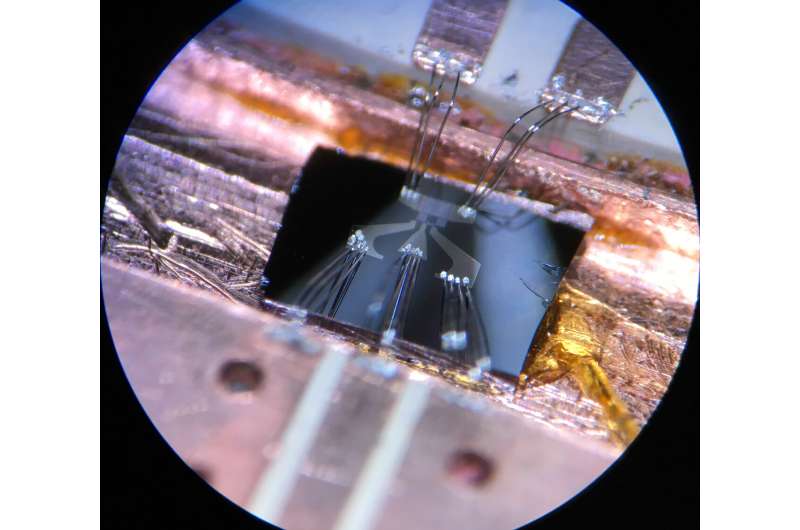August 19, 2020 feature
A method to perform canonical phase measurements using quantum feedback

Light is known to have a number of fundamental properties, including color, brightness, and direction, most of which are immediately apparent and can be observed with the naked eye. There are now several instruments to detect and measure these properties, such as photon counters, detectors often used in research that measure brightness by counting individual light quanta. Crucially, some existing devices can also measure these properties at the so-called quantum limit, which is a fundamental barrier for the precision of a measurement.
A property of light that so far proved to be quite elusive and difficult to measure at the quantum limit is the phase of a light wave. Researchers at University of California Berkeley have recently implemented a proposal introduced 25 years ago by one of their collaborators that outlined a possible way of performing optimal measurements of this property, also known as canonical phase measurements. In a paper published in Nature Physics, they apply a reliable method for implementing canonical phase measurements utilizing quantum feedback, which outperforms all previously proposed techniques.
"Phase and power obey a version of the Heisenberg uncertainty principle, just like position and momentum," Leigh Martin, one of the researchers who carried out the study, told Phys.org. "The more you know about one, the less you know about the other. A bizarre property of a canonical phase measurement is that it's completely oblivious to power. In theory, it can't tell the difference between a blinding light and complete darkness, but it can optimally determine the phase of the incoming light field."
The technique used by the researchers measures the phase of a light wave at the quantum limit by not measuring the power of the light wave. To refrain from measuring power, the researchers synchronized their detector with the incoming electric field of a light wave, which oscillates up and down. The height of the wave at which this field oscillates ultimately determines the power of a light beam.

"If you only turn on your detector when the wave is between 'up' and 'down,' then the field at that moment in time is zero regardless of the overall power," Martin explained. "The catch is that you don't know the moment at which that happens unless you already know the phase to begin with. Therefore, we continuously adapt the timing of our detector as the signal arrives—essentially changing the timing during the arrival of a single photon."
The researchers evaluated the effectiveness of the new system they devised and found that it could successfully collect single-shot measurements on a one-photon wave packet. Moreover, their technique exceeded the present standard for heterodyne detection.
"To me, this project shows how much we can learn about and improve measurements using quantum effects," Martin said. "In this study specifically, we used an example of a very general phenomenon, which is that if you change your measurement basis during a quantum measurement, you can measure a much larger class of observables than what you started out being able to measure."
In the future, the new measurement technique could be used to carry out research that involves detecting and leveraging the phase of light waves at the quantum limit. In their future work, Martin and his colleagues also plan to explore alternative measurement methods that exploit the strong non-linearities in superconducting circuits, a class of highly efficient circuits with zero electrical resistance.
"People are very excited about quantum information platforms like superconducting circuits for quantum computation, but there are tons of things that make them really special for doing measurement science as well, such as strong photon nonlinearities and adaptive measurements," Martin said. "I'm hoping to keep pushing the limits of quantum measurement both in superconducting circuits and also in the system that I work with right now, nitrogen vacancy centers in diamond."
More information: Implementation of a canonical phase measurement with quantum feedback. Nature Physics (2020). DOI: 10.1038/s41567-020-0939-0.
Journal information: Nature Physics
© 2020 Science X Network



















